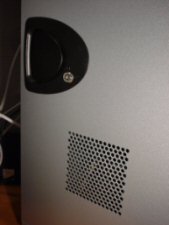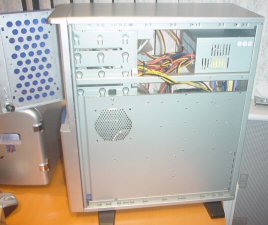External - Rear/PSU/Feet/Side Panels
The front of the Chieftec impressed me with its great features and customisable grills but on first appearance the rear of the case doesn’t shout out to me. The first thing that alarms me is the horrible fan grills. Not only do these stamped out fan grills reduce airflow but they also produce turbulent air which creates noise. Noise is a major concern with computers these days as a lot of users use them in rooms such as their bedrooms or living room quarters. Papst are a large manufacturer that are well known for manufacturing quiet fans. They produce some 80mm computer fans that rate at 12dBA. This is basically silent, but when installed into a case with stamped out metal fan grills such as the ones seen on this case, then noise levels can increase dramatically. I would have liked to have seen these fan grills replaced with chrome wire ones which we have seen around for a few years now. They are cheap and effective. Laser cut fan grills are very nice, but they tend to be not very effective at stopping kids and “BIG” kids from sticking their fingers in through the grill and into the spinning fan blades.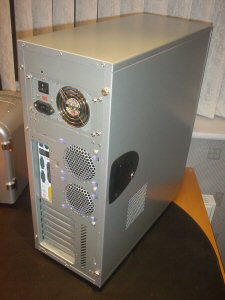

Not all Chieftec BX cases come with power supply units. After a quick 10 minute look around the internet at retailers, it appears most companies are selling the BX without a PSU. The PSU that I received with the case is a Chieftec 360W single fan. The Chieftec 360W PSU has six molex connectors, two floppy connectors and the usual ATX motherboard power connectors. The PSU doesn’t have any SATA power leads though, which is a real shame since the latest released PSU’s have at least one SATA power lead.
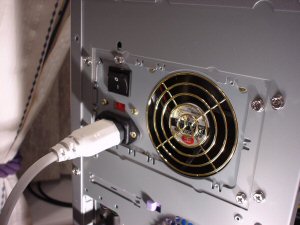
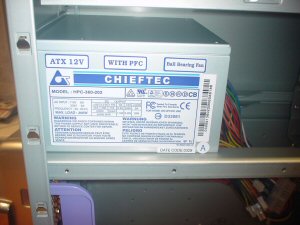
An area that often gets skipped past within case reviews are the feet as they are at the bottom of the case. The feet are one of the most important features on a case. If these are designed poorly then you risk the possibility of scratching your desk. The last time I looked at computer desks they weren’t cheap. The feet on the Chieftec are made from hard plastic. I have no worries about them scratching any surface as they are quite large and designed well. It’s possible for the feet to be twisted out to make the case more stable. I would recommend always having the feet on this case twisted outwards as it reduces the risk of it falling over as the case stands at a mighty 522mm high.
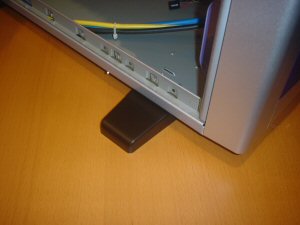
I mentioned earlier about lockable side panels. Only one of the side panels is lockable, the other panel is held on by 3 screws. At first I thought what’s the point in locking the case if the opposite panel is accessible by removing 3 screws? I tried the scenario out. Locked the side panel and tried to gain access to the computer components via the unlocked side panel. I was actually very surprised at how clever the case has been designed. The motherboard tray (which unfortunately isn’t removable) extends across the full width of the case. There is absolutely no way to gain access to any of the components. To gain access to the inside of the case you have to remove 2 thumbscrews which are securing the lockable side panel in place and pull on the handle. The side panel can then be easily removed. I love the idea of the handle on the side panel. It clicks into place in seconds. The thumbscrews aren’t necessary; they are just there to add extra protection for when the case is in transport to prevent the side panel from jumping off. Both side panels have cleverly positioned 92mm honeycomb fan grills. One is positioned to allow air to access the case around the graphics card and expansion cards and the other is blowing air across the hard drive racks.
